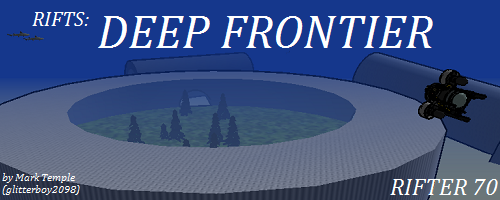Dorsal/Wing Module: 6.4m x0.47m x 0.79m (length is somewhat exaggerated due to a "paddle" that goes beyond the nozzle)
Arm Module: 3.63m x 0.32m x0.63m (width must be off as it appears to be the same width as the upper arm bay in fighter mode which must be >0.38m)
Leg Module #1: 2.03m x 0.63m x0.32m (2.03m overall, front profile view is to the side)
Leg Module #2: ? x 0.32m x 0.32m (unknown length, front profile view is to the bottom
The Leg Modules might be one piece overall, I divided them due to the front profile view suggests they are two objects, but the isometric view is one object. However, as they appear to wrap around the leg, there could be multiple connection stations as such it could be one or two modules per leg (with the 2 appearing to overlap), as such I will treat each leg as having "two" modules.
Now compared to the VF-1's FAST Pack modules (that I also generated dimensions for, see spoilers*), the SS.Alpha modules are smaller over half the time compared to their counterpart in terms of dimensions AFTER adjusting for the proportional size difference between the Alpha and VF-1 (in F-mode). Futher impacting the SS.Alpha modules is that they use much more volume limiting shapes as compared to the VF-1. The VF-1's can all be treated as simplified rectangular boxes, where the SS.Alpha's appeared to be a combination of 3-sided pyramid and/or triangular prism for the non-leg modules if we are looking to keep negative (open) space to a minimum.
Since we have dimensions, we can estimate the maximum possible propellant and/or missile capacity, in practice we have to balance this volume against various factors including launch mechanisms, engines (main and maneuvering), sensors, and possible negative spaces included. Based on the dimensions AND ALL POSSIBLE VOLUME IS USED FOR ONE SAID FUNCTION:
Propellant Capacity (MAXIMUM, EACH, # in parenthesis assumes it is a prism, other # is pyramid):
Arm Module: ~120L (~361L)
Dorsal Module: ~398L (1,194L)
Leg Module #1: ~67L (405L, not as confident, red callout image suggests a smaller footprint)
Leg Module #2: as it lacks a length, I cannot determine the Volume.
Missile Capacity (MAXIMUM, EACH, # in parenthesis assumes it is a prism, other # is pyramid), assuming they repurpose the MM-60 SRM:
Arm Module: ~12x (~37x)
Wing Module: ~41x (124x)
Leg Module #1: ~7 (~42x)
Leg Module #2: as it lacks a length, I cannot determine the Volume.
It should also be remembered that these values in actual practice are going to be less as they are balanced between various systems contained within said volume. The shapes are not uniform either, so the available volume will actually run between these two (for example, the wing modules appear to have a pyramid front section with a rectangular prism in the rear, so the actual volume is somewhere between them).
It should be noted nothing requires the UEEF to re-use the MM-60 SRM, they could instead choose to use the various Mini-Missiles in their inventory (GR-97, GR-103, 60mm RL-6, 78mm used in the Alpha Head) or use a newly developed missile. Nothing exists in AotSC about the missile(s) these modules utilize.
As previously mentioned, the SS.Alpha modules in question are smaller than the ones on the VF-1, even after adjusting for the size difference between the two mecha. What might be extremely interesting is that these approximate dimensions calculated here would allow the use of the two (275mm on the VF8, 300mm VF1) known Veritech MRM missiles (in the RT.com Infopedia) in place of any SS.Alpha module based on the diameters involved. The length of the missiles are not stated at RT.com, but I do not think it will be an issue if you can make an MRM for the smaller VF-8 Logan (in canon the Infopedia size is smaller than the 2E PB RPG size). On the Wing and Arm stations based on the height of the module instead of the width, you could justify the VF-1's 533mm LRM and/or the Beta's 560mm MRM, though there might be complications in using the larger size related to the width, mass, and possible length.
This really has me wondering if HG could have inadvertently given the regular Alpha Fighter mission hard points for heavier missile carriage (if all of them work, adjusting for the smaller size this MRM capacity for the Alpha would match up to the VF-1's, and if only the top stations work for LRMs again it's proportional to the VF-1 based on the size) and possibly even propellant tanks. This also ignores the OSM Model Kit's under-intake Missiles, which if used could further increase its capabilities. It also assumes you only put x1 MRM per station (and don't have some ability to stack them based on the height of the module). This would not invalidate the Beta design per say, since with a Beta the Alpha would get an all-in-one-and-then-some addition without having to balance these stations for a given mission.
If the locations chosen where in fact missile hardpoints at one time that might explain the text on pg85 that states "Because these modifications load the spaceframe design to its very limits, they are not practical for use in atmospheric environments." If the stations expected to handle the amount of thrust a missile could generate, they might not be able to handle the higher thrust loads from a larger engine leading them to under size the modules. It would be like trying to use an RL-10A5 Rocket Engine (64.7kN of thrust, some RL-10 variants have even more thrust this is more lower end) in place of the AIM-9 Sidewinder motor (17.8kN thrust) on the F-16 or F/A-18 wing-tip rail station (or other station), it might not be able to handle the additional thrust (~3.6x, and you might not be able to strengthen it).
*VF-1 Info
Spoiler:
